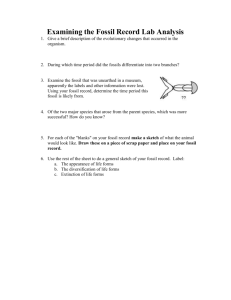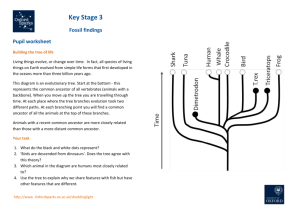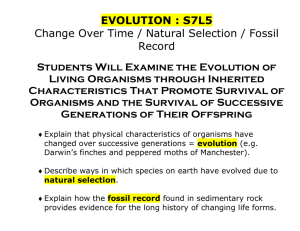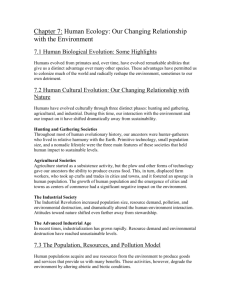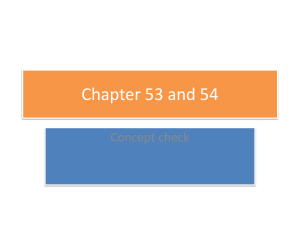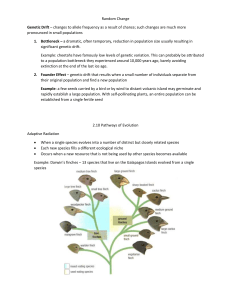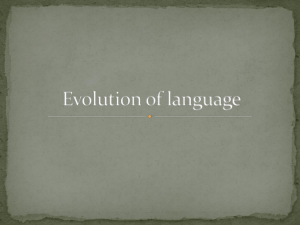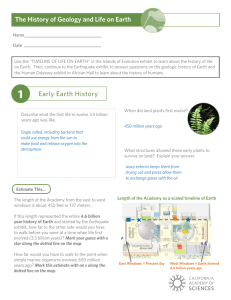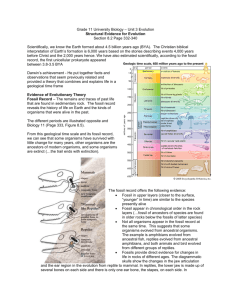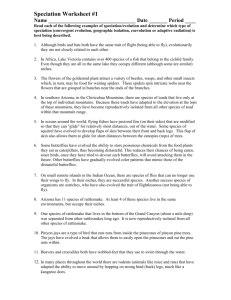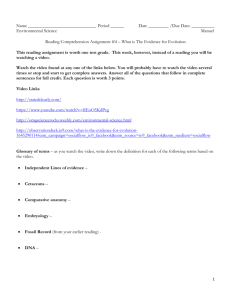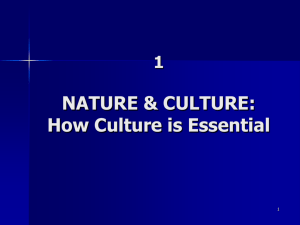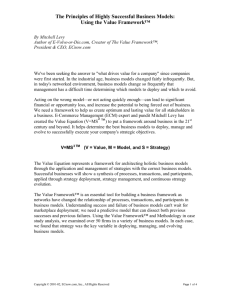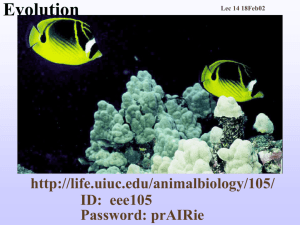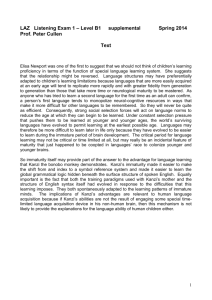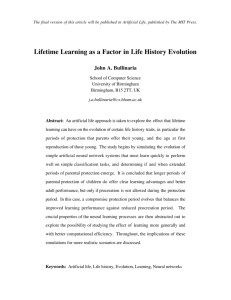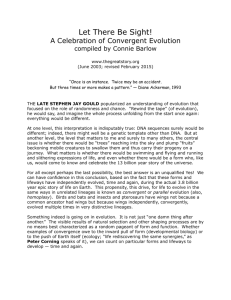Ch 26 Biodiversity Worksheet
advertisement
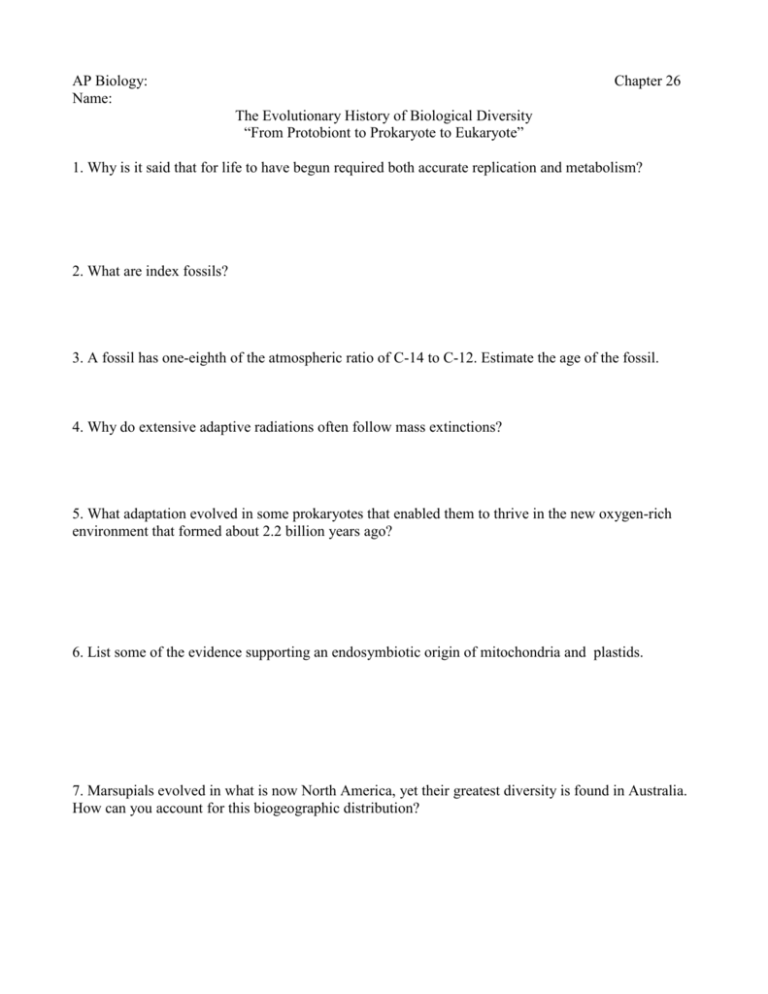
AP Biology: Name: Chapter 26 The Evolutionary History of Biological Diversity “From Protobiont to Prokaryote to Eukaryote” 1. Why is it said that for life to have begun required both accurate replication and metabolism? 2. What are index fossils? 3. A fossil has one-eighth of the atmospheric ratio of C-14 to C-12. Estimate the age of the fossil. 4. Why do extensive adaptive radiations often follow mass extinctions? 5. What adaptation evolved in some prokaryotes that enabled them to thrive in the new oxygen-rich environment that formed about 2.2 billion years ago? 6. List some of the evidence supporting an endosymbiotic origin of mitochondria and plastids. 7. Marsupials evolved in what is now North America, yet their greatest diversity is found in Australia. How can you account for this biogeographic distribution? 8. Explain the snowball earth hypothesis 9. Bacteria first appear in the fossil record about 3.5 billion years ago. Humans appeared in the fossil record only a few million years ago. Given this, which group would you say is more highly evolved? a. What kinds of arguments or evidence would you use to support the idea that bacteria are more highly evolved? b. How would you support the idea that humans are more highly evolved? 10. You want to look for life on other planets; given what you know about the origin of life on earth, a. What kind(s) of life would you look for? Explain your reasoning. b. What tests or probes would you use to find the kind of life you proposed in part a. Explain your reasoning.



